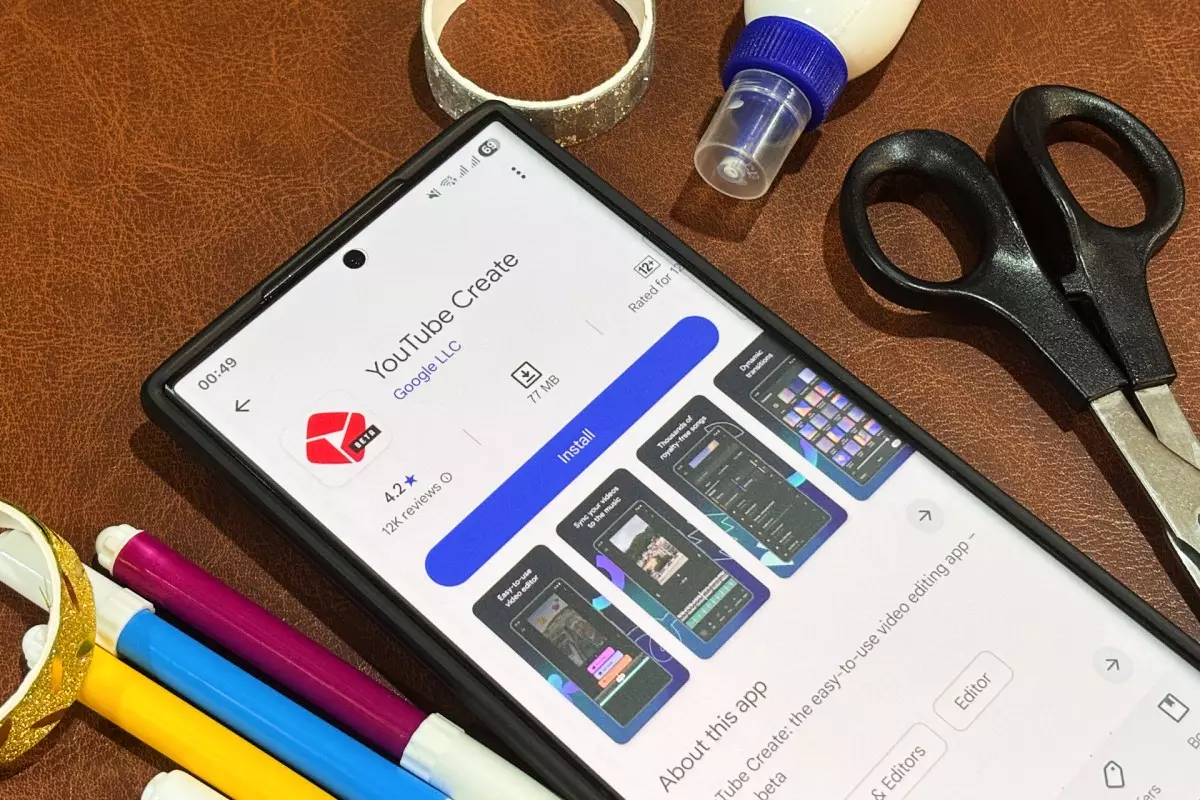Google’s YouTube Create, a mobile video editing app initially exclusive to Android, is gearing up to launch on iOS—a strategic expansion nearly two years after its debut. This attempt to conquer the competitive landscape of mobile video editing is ambitious and arguably overdue. From recruiting engineers in India to refine the iOS version, Google signals intent, but the question remains: can YouTube Create genuinely disrupt a space ruled by titans like ByteDance’s CapCut and InShot?
Mobile video editing is no longer a niche pursuit; it’s a cornerstone tool for creators worldwide. The competition runs broad and deep. CapCut, linked intimately with the powerhouse TikTok, commands an astounding lead with 442 million monthly active users on Android and 194 million on iOS, dwarfing YouTube Create’s underwhelming fewer-than-one-million monthly users on Android. InShot, while overshadowed by CapCut, still outpaces YouTube Create by miles. These numbers demystify the market dominance these apps enjoy, built not just on features but on entrenched ecosystems and network effects. Google’s attempt, despite YouTube’s massive brand recognition, looks like it’s barely scratching the surface.
Why Has YouTube Create Struggled So Far?
YouTube Create’s modest download figures—only 4 million combined since its launch—contrast sharply with the tens of millions of downloads seen by its competitors quarterly. Even with the advantage of YouTube’s gargantuan platform, the app struggles to attract a broad user base. Part of the problem lies in timing and integration. CapCut’s years-long presence and seamless TikTok integration create a network effect cementing user loyalty. Users don’t just edit videos in isolation; their workflow often involves direct uploads, interactions, and challenges facilitated within the app’s ecosystem.
Moreover, retention is a glaring issue. YouTube Create’s 90-day retention rate stands at a meager 1%, a stark contrast to CapCut’s 7% and InShot’s 4%. This disparity suggests that while users might experiment with YouTube Create, they quickly churn, possibly due to either a lack of compelling features, inferior user experience, or absence of cross-platform synergy that competitor apps enjoy. User engagement further underscores these challenges – average time spent and session frequency lag behind the competition, implying limited stickiness.
Signs of Promise in Growth and Engagement
Despite these challenges, YouTube Create is not completely stagnant. It posts a 28% year-over-year increase in monthly active users on Android, outperforming CapCut’s modest 9% growth and InShot’s decline. This signals some momentum, albeit fledgling. Importantly, the app’s user base is diversifying geographically. India’s overwhelming dominance has softened from 67% to 51% of the total monthly active users, meaning YouTube Create is gaining traction internationally with markets like Indonesia, Germany, Brazil, and the UK showing promising adoption.
Emerging markets seem to be fertile ground. For instance, Spain’s user base surged by 119% year-over-year, South Korea by 91%, and France by 89%. These figures suggest that YouTube Create could potentially carve out strongholds outside of saturated markets. Google’s targeted hiring in Bengaluru for iOS development may also hint at deeper localization efforts, potentially improving the app’s appeal and utility in these growing regions.
Is an iOS Launch Enough to Level the Playing Field?
Expanding to iOS is an essential step for YouTube Create, given that significant portions of the mobile creative market reside in Apple’s ecosystem. However, the iOS environment itself presents an even tougher battleground. CapCut and Instagram’s Edit feature collectively control staggering monthly active users and download figures on iOS, leaving little room for new entrants to maneuver easily.
While YouTube Create’s growing active user base suggests increasing loyalty, breaking the entrenched dominance of these apps will require more than just an iOS release. Google must address retention shortcomings by significantly enhancing the app’s user experience and ecosystem integration. Unlike CapCut’s tight coupling with TikTok, YouTube Create’s integration, while logical, may not feel as seamless or indispensable to creators.
The Strategic Opportunity and Google’s Challenge
Google’s advantage lies in YouTube’s massive creator community and content platform. If YouTube Create can evolve from a standalone editor into an integrated part of content production and sharing on YouTube, it might capture a dedicated niche of creators prioritizing workflow efficiency. The app’s early inclusion of stickers, GIFs, and effects show an understanding of creator desires, but standing out will likely require continuous innovation and smarter platform synergy.
Ultimately, YouTube Create’s journey illustrates a broader truth: in digital product ecosystems, brand power alone does not guarantee success. The incumbent’s early mover advantage, superior integrations, and user loyalty are formidable barriers. Google’s gamble with YouTube Create on iOS is a calculated risk—it may either unlock a new chapter in democratized content creation or become another product overshadowed by more agile, deeply integrated rivals.

